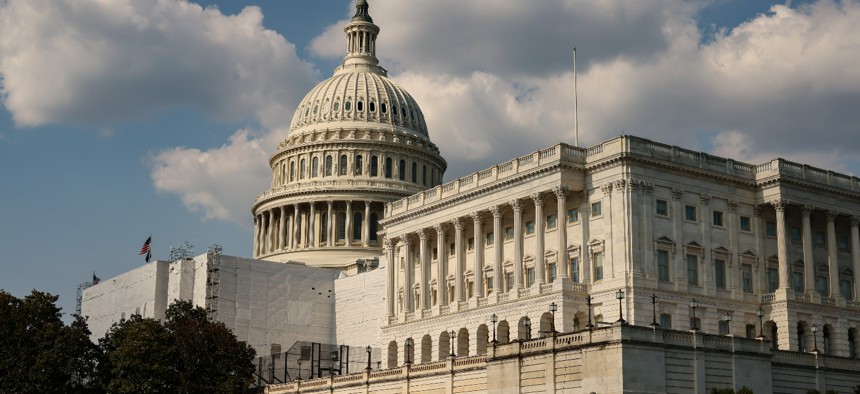Scaling and talent development dominate Senate’s AI-focused NDAA amendments

Jemal Countess/Getty Images for Get Free
The upper chamber’s draft of the NDAA looks to regulate and incorporate AI systems in federal operations, broadly helmed by a team of bipartisan senators.
Incorporating and scaling emerging technologies will be a chief theme among tech-focused Senate amendments planned for the 2024 National Defense Authorization Act, as upper chamber lawmakers work to reconcile a record number of proposed changes and await the full set.
Following a flurry of executive action and proposed legislation aimed at regulating emerging technologies like artificial intelligence, the Senate’s version of the annual appropriations bill will deal with new technological systems’ place in federal operations.
“There are a lot of amendments primarily focused on adoption, how to accelerate DOD adoption of emerging technologies,” Divyansh Kaushik, associate director for emerging technologies and national security at the Federation of American Scientists told Nextgov/FCW.
Several current proposals to this year’s NDAA illustrate this focus. On the procurement side of the bill, language advocating for a competition to develop watermarking technology that flags AI-generated content and updating Defense’s AI strategy to include risk-management techniques has been proposed.
Modernizing current Defense Cyber Red Teams — or groups designated to simulate cyber attacks to test network defenses — and incorporating AI systems in the Navy’s Shipyard Optimization analytics program also push for AI integration in daily Defense operations.
Kaushik says that these amendments speak to the ongoing need to update agency processes and successfully scale new technologies into existing systems.
“We are very good at inventing new things,” he said. “We are not that good at scaling right now.”
Training and maintaining a technically-skilled federal workforce is also a key theme in this year’s NDAA, with one amendment focused on talent development in both computer programming and AI-focused positions.
Another amendment, filed by Sen. Jerry Moran, R-Kan., would require all federal agencies to use the National Institute of Standards and Technology’s AI Risk Management Framework as guiding principles for AI usage.
“The baseline requirements would set good boundaries while not stifling innovation through AI,” a spokesperson in Moran’s office told Nextgov/FCW. “Setting rules for the federal government’s practices will help provide information on how to properly enact guidelines for the private sector.”
The push to include more AI language in the Senate bill is underpinned by bipartisan teamwork. A congressional staffer familiar with NDAA proceedings told Nextgov/FCW that Senate Majority Leader Chuck Schumer, D-N.Y., is teaming up with Sens. Martin Heinrich, D-N.M.; Mike Rounds, R-S.D.; and Todd Young, R-Ind., to lead AI policy in the upper chamber, beginning with the NDAA.
“The group’s provisions primarily focus on ensuring that the Department of Defense has adequately trained personnel and infrastructure in the areas of data science and machine learning, and can hire and retain top AI talent in core areas of the Department, like the Chief Data and AI Office,” the source said.
The group aims to emphasize other concerns about the transparency and explicability of how modern generative AI systems work in the future, asking Defense to study and respond to these areas.
Kaushik confirmed that including relevant AI amendments in the NDAA will be the four senators’ “first stab” at becoming the leading working group on AI regulation.






